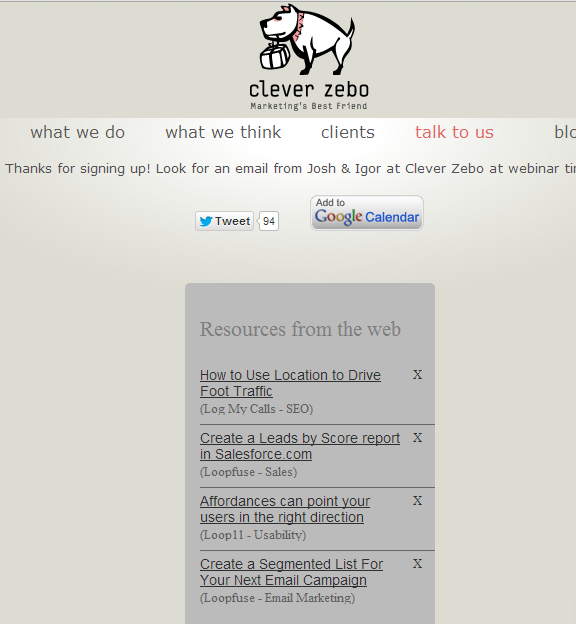It was Google’s first Panda update in 2011 that got me thinking: the gray area optimization gold rush of this millennium’s first decade will probably end up a blip on the digital marketing timeline.
We’re squarely in the age of: “The best businesses win digital.”
For a long time, companies have thought of digital marketing heterogeneously, a mishmash of siloed channels such as search, email, landing pages, shopping cart abandonment, retargeting, etc. This perspective has beenRead more…
Continue reading >It was Google’s first Panda update in 2011 that got me thinking: the gray area optimization gold rush of this millennium’s first decade will probably end up a blip on the digital marketing timeline.
We’re squarely in the age of: “The best businesses win digital.”
For a long time, companies have thought of digital marketing heterogeneously, a mishmash of siloed channels such as search, email, landing pages, shopping cart abandonment, retargeting, etc. This perspective has been reinforced by marketing technology companies who carve out their value proposition by championing the finer details of a particular channel strategy.
While there is certainly benefit to having specific optimization knowledge when optimizing a marketing channel, increasingly there is a fundamental reality that underlies all online marketing optimization. It all starts with the conversion flow.
Think of the conversion flow as a tentacled organism that thrives on customer action.
The tentacles reach out via search, social media, press, blogging, display advertising, etc. In some cases, the tentacles directly bring visitors to the conversion belly (such as AdWords click-to-call), but more routinely there are a number of intermediary steps. People need to click around a site or app, read, watch, attend events, consume collateral, check out different products …
The conceptual shift is that by focusing on just one or two tentacles, you’re probably missing out on more fundamental organism-level opportunities. Testing and experimentation that is inherently thought of and implemented in artificial silos is bound to produce unimpressive incremental improvements at best.
Once upon a time in the early days of the internet, you could succeed by gaming the system channel-by-channel, but the digital landscape has matured, and increasingly online success is determined by how much value you provide to the customer as a coherent business. Nowhere has this been clearer than recent updates to Google’s algorithm rewarding user experience and genuine relevance.
Outside of product development, the biggest impact a marketer can have is on the conversion path, the series of steps a customer undertakes to fulfill a desire. This path is at the core of most online success: certainly advertising but also search, content marketing, marketing automation and even PR.
I believe that the conversion path starts at the initial point of contact and flows through every referral, repeat purchase and customer service interaction. It matters just as much who a visitor is, where they came from and from what message or targeting as it matters how you continue speaking to and treating that visitor.
When you examine the conversion organism’s tentacles from the perspective of the larger creature, entire new possibilities open up. If you take this argument to its logical conclusion, it may mean you have to abandon such artificial organizational concepts such as retention versus acquisition or outreach versus nurture. This is a blessing to your marketing program because then you can focus on what matters: the entire customer experience.
...Read less

